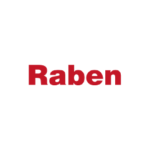Production scheduling and energy consumption
Many of you may be struggling with the high costs of energy and other utilities such as gas, process water or steam. Have you ever wondered how good production scheduling affects the unit costs of energy consumption? Can production planning reduce energy, gas or water consumption costs? In many production processes and in many industries, certainly YES.
Production scheduling: why is it so important?
You may obviously wonder what a good production schedule means. It may be different for each company and can feature different parameters and produce different effects. For a sales department, it will concern timely deliveries to customers and the availability of products in stock. For a production department, it might be high productivity and reduction of the number of changeovers. A procurement department can focus on low inventory levels of raw materials and components and ensuring them for production. Other effects are important for a maintenance department, where the machine failure rate is an indicator frequently analysed. It also happens that the goals of particular departments are contradictory. In fact, it is all about the best financial result of the enterprise. We will reach it by providing the best service to our customers: fulfilling their orders on time, flexibly responding to their needs and guaranteeing acceptable prices. Therefore, it is impossible to ignore the subject of production costs. Let us narrow the discussion to the following issues:
- Can we talk with the energy supplier about more favourable terms of billing for energy consumption? About lower unit costs or a different billing structure?
- Can we reduce the consumption of energy, gas or water in relation to the finished product unit we make?
Energy: prices are negotiable
When you start talking to an energy supplier, you probably need to answer the question of how reliable your company’s history of energy consumption is. The energy consumption schedule is analysed, often from the last 2–3 years, with accuracy to the hour. On this basis, your company gets a price offer. But why not to change the pattern of the discussion and try to present what a stable and predictable partner we can be? Let us not only talk about the history of energy consumption, but also (and, perhaps, above all) about the possibility of planning this energy consumption. Let us have a specialised consumption forecasting department that will design day-to-day plans.
Energy bills: adjusted to consumption
Or maybe let us try to depart from the current purchasing policy, when one round-the-clock price is often set, regardless of consumption (possibly, with a percentage tolerance of deviations from consumption and a set price for consumption within the tolerance)…
What if our consumption is outside the established tolerance? Our supplier probably has to buy the missing quantity for us or resell the quantity we have not used at the current price. Note that each supplier cares about a predictable and stable customer. The supplier can talk with such a customer about better purchase parameters. On the other hand, a well-known, more predictable customer may develop a better negotiating position in talks with the energy supplier. In this way, the slogan: I pay for what I used at a negotiated low purchase price, will be put into practice.
Production scheduling and technical media
What about technical media? Their consumption is often irrespective of the feed level. What processes are we talking about? About chamber painting, oven annealing and homogenising and dyeing, among other things.
Let us focus on the case where the technology allows incomplete feed. If the machine gets a full load, the risk that it will not reach the parameters is lower. If it does not get the full load, it is easier to repeat the process; gaps and losses will arise. Some part of energy, gas, water, chemicals or dyes are consumed regardless the feed level. It happens that the cost of machines and people is almost the same.
If the feed is incomplete, the company incurs losses. The task of the planners is, therefore, to provide as many feeds as possible with 100% filling. Why? Because incomplete feeds are the costs that went to waste or to the employee’s pocket.
In practice, production planning reduces costs
It is also connected with the proper planning of previous production process operations. There are processes where the level of complete feeds has been increased by more than 30%. It was calculated that the sum of the losses decreased.
This change is clearly visible on the example of water consumption, which does not depend on the amount of the load: the machine must be fully filled with water. Due to the increase in the full feed volume, water consumption, calculated in m3/kg of processed material, decreased by over 25%.
Production management is the key to success
All this is not possible without advanced programs supporting production planning and scheduling. For this purpose, it is worth using IT solutions that will give the company a new management dimension and show a new perspective that will allow you to arrange your business differently.
Artur Głodek
business analysis department expert eq system



































